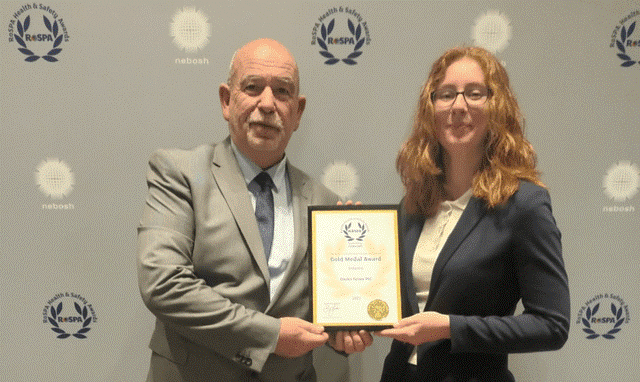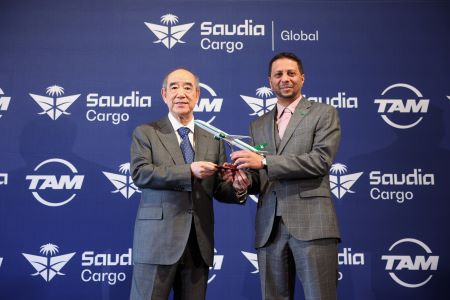As technology and consumer demands advance, real-time visibility has become a necessary component in automotive supply chain execution
While lowering costs involved in supply chain execution may be the primary driver for implementing a real-time visibility solution, there are additional tactical and strategic benefits that contribute to ROI. Wesley Haaksma, Strategic Account Executive, Shippeo SAS discusses exclusively for International Trade Magazine the importance of real-time visibility and track and trace technology in the automotive industry.
As the global automotive market becomes more competitive and volatile, car manufacturers and original equipment manufacturers (OEMs) experience increasing pressure. Aggressive and innovative new market challengers, such as Tesla, are redefining the sector, and consumer tastes and demands relating to electric vehicles are shifting. At the same time, the industry is facing a global pandemic and communities deal with lockdowns, travel restrictions, and greater financial uncertainty. Production plants are finding it difficult to manage their costs and scale up or down. Given the sheer volume of parts, components, suppliers and assembly lines throughout automotive supply chains, effective collaboration between partners is crucial for driving innovation and quality outputs.
Fortunately, real-time transportation visibility (RTTV) platforms can enable companies to face these challenges by helping to cut costs, improve strategies and streamline day-to-day operations. They can boost collaboration amongst supply chain partners, reducing friction and duplication of tasks, overcoming silos and ultimately increasing the pace of joint innovation with suppliers. By leveraging new easily integrated real-time visibility platforms to share rich real-time datasets, collaborators’ mindsets can shift from a nodal to a network mentality, paving the way to tackling some of the industry’s biggest difficulties, such as reducing time to market.
By incorporating a high degree of visibility throughout the end-to-end supply chain, more data and information becomes available to facilitate smarter decision making. This is shifting planning horizons from periodic to real-time, making it possible to continually evolve plans based on the latest operational performance data. What’s more, this data is not just useful for decision making in the present. Months or even years’ worth of data can be analysed to improve planning of future projects.
Reducing cost factors: downtime, penalties, recalls
Assembly line downtime is expensive for car manufacturers and OEMs alike. Suppliers can face hefty penalties if they fail to meet delivery deadlines. An RTTV solution can provide highly accurate and reliable predictive estimated times of arrival (ETAs), helping suppliers and carriers better manage their synchronisation to satisfy strict just-in-time manufacturing requirements. Sophisticated solutions automatically warn users if a shipment is likely to miss its planned ETA, allowing corrective action – such as urgent air transfers of parts – to be taken. Greater ETA accuracy can also help car manufacturers and OEMs avoid paying tens of millions of Euros each year on unnecessary expedited air deliveries, where other modes of transport would have in fact made the delivery on time and save suppliers and carriers hundreds of thousands of Euros in penalties.
Recalls are another potential cost factor. Given the sheer volume of parts in cars, and the globalisation of platforms and technologies, suppliers’ systems and components are used in multiple car models throughout the world. This greatly increases the number of customers potentially affected by a recall. Real-time granular tracking of parts, as well as their condition during transit, supports quality control. Network-connected smart sensors receive objective data on indicators such as the temperature or humidity inside a shipping container or truck at any given moment. A sophisticated RTTV platform can connect with such sensors from various providers where and when needed. By being able to identify and ring-fence parts shipments affected by quality breaches, this can help to avoid a far wider and costlier recall.
Increased agility
The constant availability of real-time supply chain performance data and insights helps decision makers confidently make better decisions. In addition, the flexibility of API (Application Programming Interface) integrations used by real-time visibility platforms also unlocks further organisational agility. Most of the automotive industry operates on Electronic Data Interchange (EDI) technology standards for securely sharing data between ecosystem partners, specifically the EDIFACT international standard with the VDA norm 4984, ASN 4987 or IFTSTA 4945. While this enables manufacturers and their OEMs to make requests for the transportation of parts as well as receive pick-up confirmations and planned delivery slots, there is no data available as to whether parts will be delivered On-time In-Full (OTIF)in case of disruption, be it mechanical breakdown, traffic accidents or adverse weather conditions. The technology is expensive to maintain and update and adding new data exchange partners can be cost-intensive. This makes it more difficult to change or add suppliers quickly in response to market changes, potentially taking months to onboard and requiring significant investment, which in turn limits agility. API integrations on the other hand can be made in weeks or even days and are relatively straightforward and cost-effective to implement.
Greater resilience
A lack of visibility is a major supply chain risk factor and a potential source of vulnerability for any company. The ever-increasing complexity and fragmentation of automotive supply chains has left it vulnerable to disruptions. Having already been dealt a blow with the Covid-19 pandemic in 2020, the automotive industry was further impacted by a global chip shortage. As cars become increasingly ‘smart’, their onboard systems require ever-increasing computing power. Following the initial slowdown of car manufacturing, semiconductor makers producing chips for vehicles were forced to pivot and supply a suddenly booming gaming industry. Some months later, demand for cars was skyrocketing and chipmakers couldn’t switch their production fast enough to cater again to cars. Analysts estimate it will take two years for semiconductor supply to catch up with demand. Previously overlooked due to overconfidence and complacency, the industry’s resilience to external events was clearly overestimated. The pandemic served as a reminder of just how complex, risky and under stress automotive supply chains had become and made it obvious that significant end-to-end visibility gaps exist, which is surprising given how important just-in-time supply chain synchronisation is for car manufacturers.
Automated continuous improvement
Both real-time and historic performance data for key transport key performance indicators (KPIs) such as dwell time, OTIF and punctuality, can all be fed from an RTTV platform back into a car manufacturer or supplier’s existing system to improve the level of data they have available on supply chain performance for analysis. The vast data sets can be processed by machine learning algorithms to identify more subtle, complex patterns based on historical disruptions and their outcomes. Artificial intelligence applies machine learning techniques to establish correlations and patterns, facilitating recognition of future events further in advance, based on past lessons learned. This allows the supply chain to ‘self-learn’ by automating the process of continuous improvement as intelligence and decision making continues to improve all the time.
Take Faurecia, a provider of automotive technology. Faurecia and Shippeo are operating the first real-time tracking system for land transportation in the automotive industry, based on a 140,000+ carrier network, and an innovative machine learning ETA calculation, specifically designed for road transport and its unique constraints. Successfully deployed to all European plants from Faurecia’s supply chain operations department in Poland, Shippeo is directly integrated with their existing systems, and tracks all European flows, regardless of region or language. The platform isn’t just creating value for Faurecia. It also creates value for their partners and customers, both internal and external, improving customer satisfaction by better managing each party’s expectations. Apart from improving overall efficiencies across the supply chain, the real-time communications, sent automatically, allow Faurecia’s customer teams to take proactive measures swiftly and reduce any transportation risks.
Despite the challenges car manufacturers and their suppliers are facing in the wake of major global economic uncertainty, the market opportunity for automobiles remains enormous given the emergence of wealthy markets and strong appetite for electric vehicles. By leveraging new technologies to both eliminate unnecessary operational costs and increase flexibility and agility throughout automotive supply chains, car manufacturers and automotive sector suppliers can better cope with disruptions, gain a competitive advantage and ultimately improve both customer experience and shareholder value.
 Commentary: Wesley Haaksma, Strategic Account Executive, Shippeo SAS
Commentary: Wesley Haaksma, Strategic Account Executive, Shippeo SAS
Assembly line downtime is expensive for car manufacturers and OEMs alike. Suppliers can face hefty penalties if they fail to meet delivery deadlines. An RTTV solution can provide highly accurate and reliable predictive estimated times of arrival (ETAs), helping suppliers and carriers better manage their synchronisation to satisfy strict just-in-time manufacturing requirements. Sophisticated solutions automatically warn users if a shipment is likely to miss its planned ETA, allowing corrective action – such as urgent air transfers of parts – to be taken. Greater ETA accuracy can also help car manufacturers and OEMs avoid paying tens of millions of Euros each year on unnecessary expedited air deliveries, where other modes of transport would have in fact made the delivery on time and save suppliers and carriers hundreds of thousands of Euros in penalties.
Recalls are another potential cost factor. Given the sheer volume of parts in cars, and the globalisation of platforms and technologies, suppliers’ systems and components are used in multiple car models throughout the world. This greatly increases the number of customers potentially affected by a recall. Real-time granular tracking of parts, as well as their condition during transit, supports quality control. Network-connected smart sensors receive objective data on indicators such as the temperature or humidity inside a shipping container or truck at any given moment. A sophisticated RTTV platform can connect with such sensors from various providers where and when needed. By being able to identify and ring-fence parts shipments affected by quality breaches, this can help to avoid a far wider and costlier recall.
 Commentary: Amir Rashad, CEO, Centersource Technologies
Commentary: Amir Rashad, CEO, Centersource Technologies
Technology can truly revolutionise how companies manage their supply chains. Visibility is more than just tracking goods at sea or on the road, it’s integrating and connecting all the steps before and after with your colleagues and partners, and automatically drafting documents, recommendations and analysis on performance. Most importantly, it is ensuring all parties know their responsibilities and deadlines and automating tasks internally and externally. Meaning, that instead of spending half the day collecting or sharing updates, collection and distribution information, it is all automated. It reduces the hundreds of small tasks happening between inquiry of goods and eventual arrival at POD.
In the industry, great effort has been put into maximising production and yield, and improvements over time are so good that now only 1% can be expected in production. However very little has changed for export, import, admin and logistics departments. Which arguably, are the heart and or primary engine which allows products to be produced in the first place. In these departments improvements can be achieved from 10-40% across many different KPIs such as price, work automation, delays, customer satisfaction and much more – meaning less people can manage a larger volume efficiently.
 Commentary: Josh Brazil, Chief Operations Officer, Ocean Insights
Commentary: Josh Brazil, Chief Operations Officer, Ocean Insights
Our tracking technology here at Ocean Insights is purely data driven. That means no extra hardware (an additional supply chain) is required in deploying the service. Ocean Insights Container Track & Trace platform was the first to merge container liner schedules and carriers’ container tracking information with neutral AIS vessel tracking data, taking ocean logistics planning to a whole other level.
You can now even analyse and identify three levels of arrival risk. Predictions are given as a delay warning and/or a most likely arrival date. Where possible, we calculate the most likely time of arrival as well as a confidence interval and then compare it with the carrier’s initial and latest ETAs for that ocean leg. The system works much like a “triage” system by assigning an arrival a 3 level risk score based on smart algorithms and a multitude of data points to provide the most reliable information.
The predictions are visible in the application where the user can see if the Time-of-Arrival Prediction differs from the ETA date communicated by the carrier.
Where an alternative Time of Arrival can be calculated for a container, information can be found on the container’s detail page, directly within the voyage representation, as well as in the milestone table. Users can also set up filters to explicitly look up containers with corresponding warnings.
To stay up to date on the latest, trends, innovations, people news and company updates within the global trade and logistics market please register to receive our newsletter here.
Media contact
Rebecca Morpeth Spayne,
Editor, International Trade Magazine
Tel: +44 (0) 1622 823 922
Email: editor@intrademagazine.com





